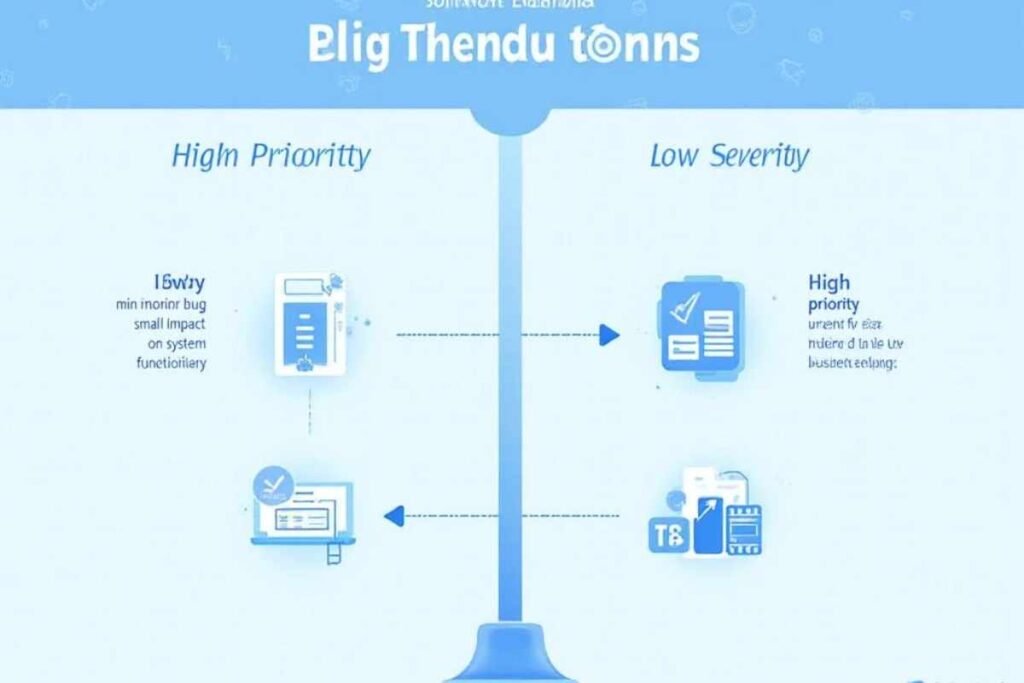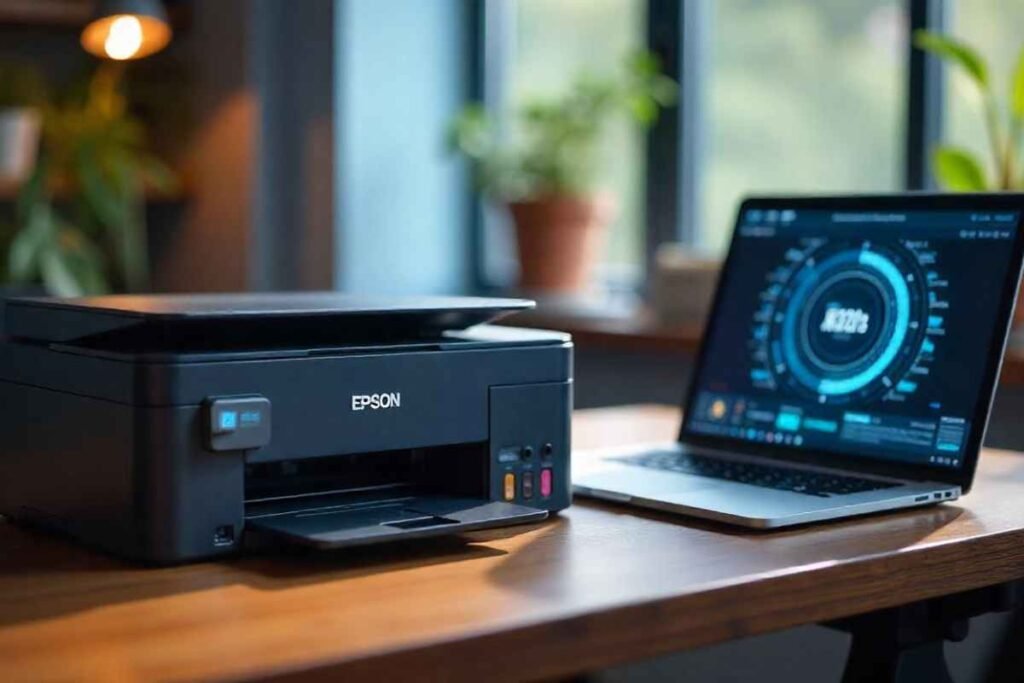In software development understanding the nuances of defect management is crucial. A high priority and low severity example highlights issues that may seem minor technically but require immediate attention due to their business impact. By recognizing these cases teams can ensure smooth project execution maintain user satisfaction and prevent minor glitches from escalating into bigger problems.
Effective handling of such defects ensures resources are allocated wisely and critical business functions continue uninterrupted. In this article we will explore real-world examples strategies and best practices for managing high priority and low severity issues in 2025.
What is the Severity and Priority in Software Testing?

high priority and low severity example refers to the technical impact of a defect on the system’s functionality. It measures how significantly a bug affects software performance or user experience. Priority on the other hand indicates how urgently a defect must be fixed often from a business perspective. While a defect may have a low technical impact it could be high in priority if it affects important business operations.
Why High Priority and Low Severity Examples Matter in 2025?
In today’s competitive market, user experience and brand reputation are more important than ever. Even small issues if left unresolved can lead to customer dissatisfaction negative reviews and potential revenue loss Technorozen approach to emerging technologies.
By studying high priority and low severity examples 2025 teams can:
- Improve product quality
- Enhance customer satisfaction
- Reduce business risks
- Strengthen brand trust
Understanding the difference between priority and severity helps teams allocate resources effectively ensuring smooth product releases.
Defining High Priority and Low Severity Example
A high priority and low severity example occurs when a minor technical issue requires immediate attention due to business importance. For instance a spelling error on the main landing page of an e commerce website does not disrupt functionality low severity but correcting it is urgent to maintain professional credibility and brand image high priority.
Importance of Identifying High Priority Low Severity Defects
Recognizing such defects ensures the product maintains user trust and business reputation. Ignoring these issues can lead to customer dissatisfaction or potential revenue loss even if the defect does not technically hinder the system. Effective management of these defects balances technical workflow with business objectives.
Key Characteristics of High Priority and Low Severity Issues
To manage high priority and low severity example issues effectively, you need to identify their characteristics:
- Low functional impact The issue does not affect the core system performance.
- High business importance Despite low severity, it needs urgent resolution.
- Customer-facing problems Issues visible to end users require faster action.
- Short-term fixes Most problems can be solved quickly without complex changes.
For instance a color mismatch in your apps payment button is low severity but since it affects conversions it automatically becomes a high priority fix.
How to Handle High Priority and Low Severity Defects in 2025?
Managing these defects requires a balanced approach between business needs and technical feasibility. Here’s how modern QA teams deal with them:
- Immediate Reporting: QA engineers report such defects directly to stakeholders.
- Business Impact Analysis: Teams evaluate how the defect affects customers and brand reputation.
- Prioritized Fixing: Even though the defect has low severity developers handle it on priority.
- Automation Tools: Using AI-powered defect management tools in 2025 accelerates issue detection and resolution.
This structured approach ensures businesses maintain quality while meeting deadlines.
Real World Examples of High Priority and Low Severity

One common scenario is a minor typo in a login page or checkout button label. Technically users can log in or purchase items without issues low severity but the error could mislead users and harm the brand perception making it high priority. Another example is a small UI misalignment on a widely viewed homepage banner—minor technically but urgent for customer-facing appearance.
Step by Step Guide to Handling High Priority Low Severity Defects?
- Identify the Defect: Use bug-tracking tools like JIRA to log all issues.
- Assess Severity: Confirm that the technical impact is minimal.
- Evaluate Priority: Determine urgency based on user visibility and business impact.
- Communicate with Stakeholders: Inform product managers and QA teams.
- Plan a Quick Fix: Schedule prompt resolution without disrupting major development workflows.
Strategies to Prevent Escalation of Minor Defects
Even high priority and low severity example defects can cause problems if overlooked. Regular UI audits, automated testing for visible elements, and ongoing stakeholder reviews help ensure minor errors do not escalate into larger concerns. Prioritization frameworks and triage meetings facilitate quick action on high priority low severity defects.
Integrating Severity and Priority in Defect Tracking Tools
Tools like JIRA and Bugzilla allow teams to assign both labels. Custom fields can be configured to clearly mark high priority and low severity example defects. Using dashboards and filters ensures that these defects are addressed promptly without being lost in the backlog of critical issues.
Role of AI in Managing High Priority and Low Severity Defects 2025
With rapid advancements in AI driven QA tools in 2025 defect detection and prioritization have become more efficient than ever. AI helps in:
- Identifying customer facing issues quickly
- Predicting potential business impacts
- Recommending priority levels automatically
- Speeding up bug resolution workflows
This not only reduces human error but also ensures business-critical issues are resolved before they affect customers.
Benefits of Properly Managing High Priority Low Severity Defects
High priority and low severity example Proper handling improves product quality enhances user experience and protects brand reputation. It ensures efficient resource allocation by distinguishing minor technical issues from business critical problems allowing teams to maintain a balance between development priorities and urgent fixes.
Common Real Life Examples of High Priority and Low Severity Defects
Here are some real-world scenarios where defects are classified as high priority and low severity example
- Incorrect Company Logo on Homepage Doesn’t affect functionality but impacts branding.
- Broken Link on Payment Page Payment still works manually but customers may get frustrated.
- Outdated Contact Information Leads to missed opportunities but doesn’t affect app performance.
- Grammar Mistake in Push Notifications Low technical impact but can hurt brand professionalism.
These examples highlight why such defects must be fixed immediately despite being minor from a technical standpoint.
Want to learn professional tips and advanced tricks about this topic? Click here and unlock our complete in-depth guide instantly!
Maxxfour Com Lin: Complete Guide to Features & Benefits
Everything You Need to Know About KYC Solutions in 2025
What is Codeslide Tech News? Explained for 2025
Advanced Tips for Agile and DevOps Teams

In Agile or DevOps environments high priority and low severity example defects should be tracked as part of sprint planning. Automating notifications and integrating testing tools with CI/CD pipelines ensures rapid identification and resolution. Regular backlog grooming ensures these defects do not accumulate and disrupt release schedules
Conclusion
Understanding a high priority and low severity example 2025 is essential for efficient defect management. While such issues may not impact functionality, they require immediate attention due to their business impact.
By prioritizing tasks smartly and using structured strategies, teams can handle minor defects effectively while maintaining smooth project workflows and overall product quality.
FAQs
What is a high priority and low severity example severity defect?
A defect that has minimal technical impact but requires immediate resolution due to business or user experience importance.
How is high priority different from high severity?
High severity refers to the technical impact while high priority indicates urgency from a business perspective.
Can low severity defects ever be ignored?
Minor defects with no business impact can be scheduled for later but high priority ones must be addressed promptly.
How do teams track high priority low severity defects?
Using bug-tracking tools like JIRA with severity and priority labels ensures efficient monitoring and resolution.
Why are such defects important in Agile projects?
Ignoring them can harm user experience or business reputation even if functionality is not affected.
Q6: What is an example in real world software?
A typo in a main webpage heading or a misaligned banner affecting customer perception, but not system functionality.


